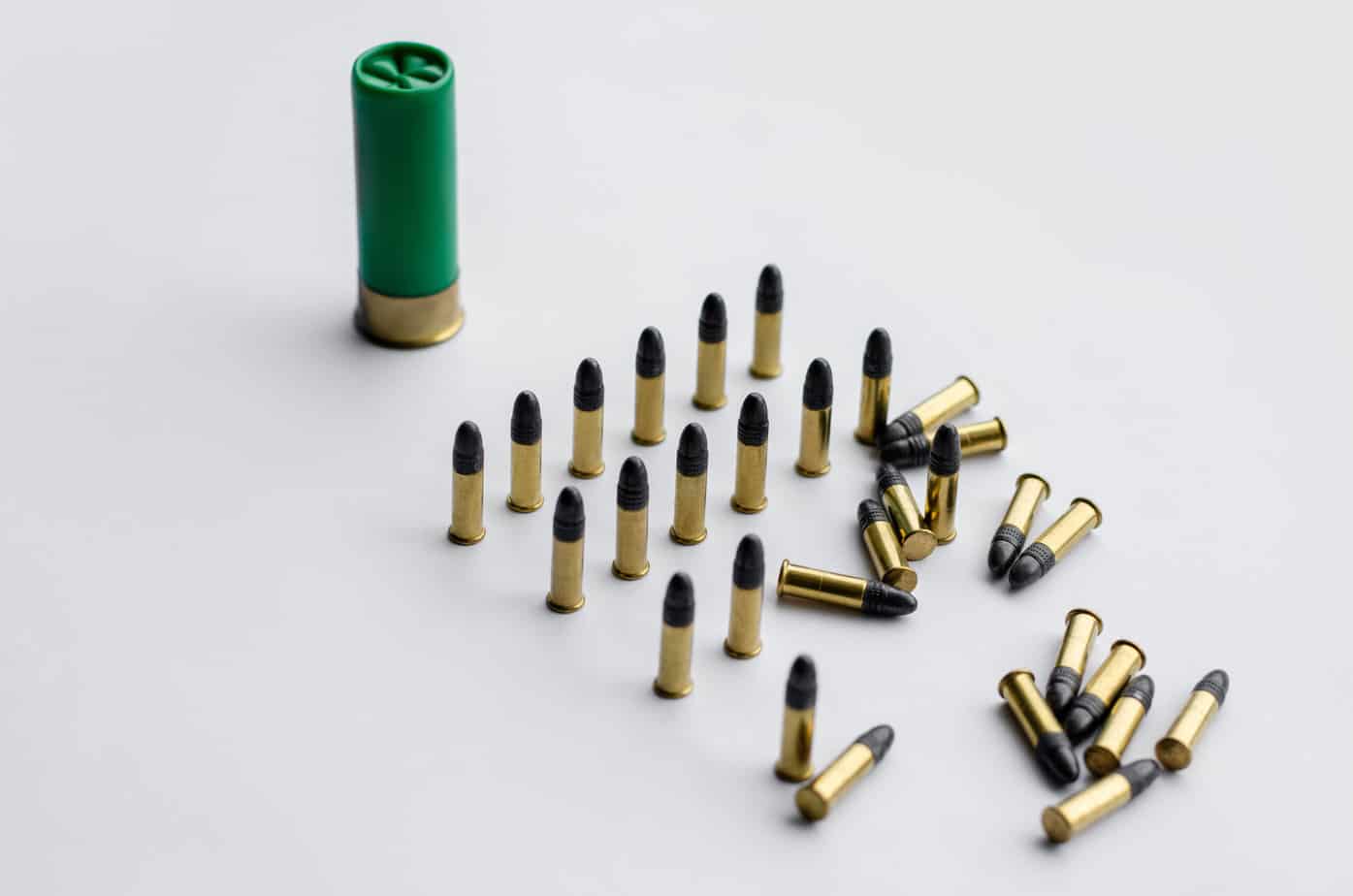As an avid hunter, I often find myself exploring various methods and equipment to make my hunting experience more dynamic and efficient. One such debate that has cropped up among my fellow hunters is whether to use a shotgun or a rifle when hunting rabbits. In this article, I’ll share my personal experience and the knowledge I’ve gained from fellow hunters to provide a fair comparison between these two firearm options.
In my experience, hunting rabbits can be both thrilling and challenging. These tiny, fast animals can sprint in unpredictable patterns, making it difficult to aim and shoot accurately. To help you decide which type of firearm is best suited for this pursuit, I will dive into the advantages and disadvantages of using a shotgun and a rifle for rabbit hunting. Weighing the pros and cons of each option can help you determine which firearm aligns best with your hunting style, skill level, and game preferences – ultimately enhancing your hunting experience.
Considering factors such as the accuracy of each firearm, potential damage to the game, and the learning curve associated with rifles and shotguns, it’s essential to evaluate your personal hunting skills and goals when choosing between these two firearm options. Stick with me as I share my insights on the pros and cons of rabbit hunting with a shotgun and a rifle.
Types of Shotguns and Rifles for Rabbit Hunting
Shotguns
In my experience, shotguns are the most popular choice for rabbit hunting. The main advantage of using a shotgun is the ability to fire multiple pellets at once, increasing the chances of hitting a fast-moving target like a rabbit. There are several types of shotguns that I have found effective for rabbit hunting:
- 12-gauge: This is a versatile option for hunting rabbits. A 12-gauge shotgun can offer a good balance of power and pellet spread, making it suitable for various hunting conditions. The Remington 870 and Mossberg 500 are popular 12-gauge shotguns known for their reliability and ease of use.
- 20-gauge: A 20-gauge shotgun, like the Beretta and Browning A5, is a lighter and more maneuverable option compared to a 12-gauge. It’s still powerful enough to take down rabbits but may require more accuracy due to its smaller pellet spread.
- .410: For those who prefer an even lighter shotgun, the .410 can be a good choice. Its smaller size makes it easier to carry and handle, but it also means fewer pellets and less power. The Benelli Montefeltro is a well-known .410 shotgun, ideal for smaller game like rabbits.
Rifles
For some hunters, rifles offer a more precise and efficient means of hunting rabbits. They require more skill and patience, but the rewards can be satisfying.
- Rimfire Rifle: These are lightweight rifles that use low-recoil cartridges, making them perfect for rabbit hunting. They offer a single projectile, which means greater accuracy is needed, but this can give a clean kill, and there’s no risk of stray pellets in the meat. Popular choices include .22 caliber, .17 HMR (Hornady Magnum Rimfire) and .22 WMR (Winchester Magnum Rimfire).
Some popular rimfire rifles for rabbit hunting are:
| Rifle Model | Caliber |
|---|---|
| Ruger 10/22 | .22 LR |
| Savage Mark II | .22 LR |
| CZ 455 | .22 LR |
| Marlin Model 60 | .22 LR |
| Remington Model 597 | .22 LR |
Remember, when choosing a shotgun or a rifle for rabbit hunting, it’s essential to consider the type of terrain, the distance you expect to shoot, and your personal preferences and skill level. Each firearm has its pros and cons, and understanding these will help you make the best choice for your hunting needs.
Pros and Cons of Shotguns vs. Rifles
Advantages of Shotguns
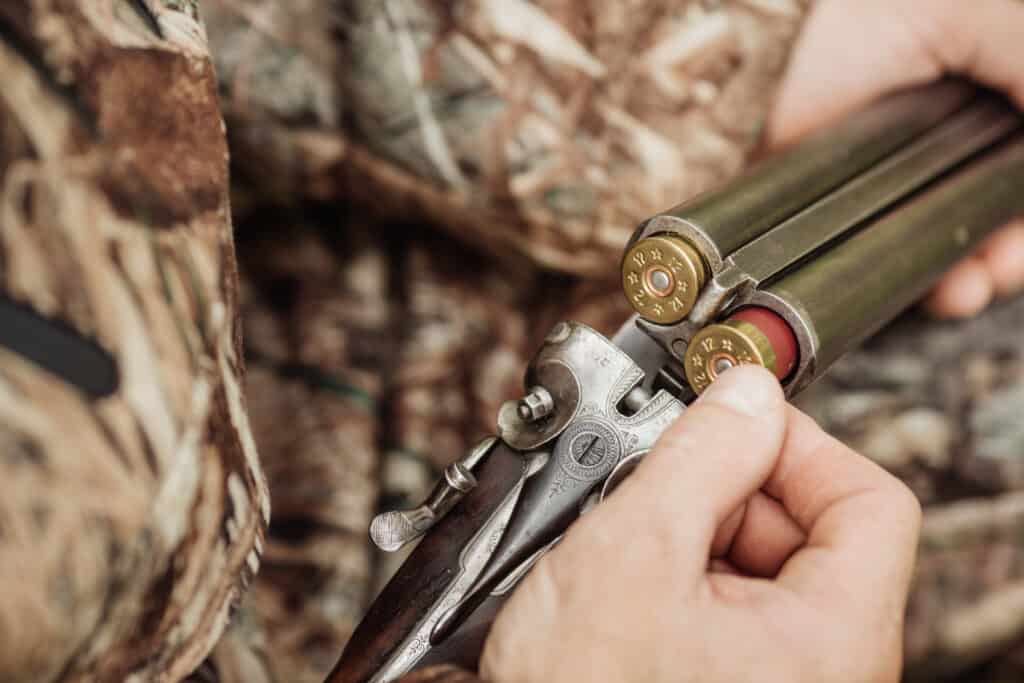
In my experience, shotguns have several advantages when hunting rabbits. With a shotgun, I can utilize different shot sizes, which improves the chances of hitting a fast-moving rabbit. Shotguns are also more forgiving in terms of accuracy, making it easier to hit a moving target.
Since I can use a variety of ammo types, including birdshot and buckshot, shotguns offer versatility that I appreciate when dealing with different hunting situations. Additionally, shotguns tend to have less recoil, making them more comfortable to shoot, even if I need to take multiple shots.
Shotguns also prioritize safety in a hunting environment, as their range is shorter than that of a rifle. This means that I don’t have to worry as much about my shots traveling too far beyond my target.
Disadvantages of Shotguns
However, there are some drawbacks to using a shotgun for hunting rabbits. Shotguns can be heavier than rifles, making them less convenient to carry through the woods. The noise level produced by shotguns can scare away rabbits, making it difficult to take a second shot if necessary. Furthermore, the shot spread may limit the effective range compared to a rifle, forcing me to get closer to my target.
Advantages of Rifles
On the other hand, rifles have some strengths that make them a viable option for hunting rabbits. Rifles are known for their accuracy, allowing me to make precise shots at longer distances. This can be particularly useful when dealing with skittish rabbits that are reluctant to come close.
Rifles are generally lighter than shotguns, making them easier to carry for extended periods. Additionally, rifles tend to cause less damage to game, as they use a single projectile compared to a shotgun’s multiple pellets. This can result in cleaner kills and less damage to the rabbit’s meat.
Disadvantages of Rifles
Despite these advantages, rifles have some drawbacks for rabbit hunting. They require more skill to shoot accurately and may be more susceptible to environmental factors such as wind. Additionally, rifles can have more significant recoil than shotguns, which may not be ideal for some shooters.
Another concern with rifles is the potential for overpenetration, which poses a safety risk in certain hunting environments. Finally, while rifles cause less meat damage, they may not have the stopping power to take down a rabbit as effectively as a shotgun with a well-placed shot.
Ammunition for Rabbit Hunting
When hunting rabbits, choosing the right ammunition is key. In this section, I’ll discuss the types of ammunition commonly used for rabbit hunting with shotguns and rifles.
Shotgun Ammunition
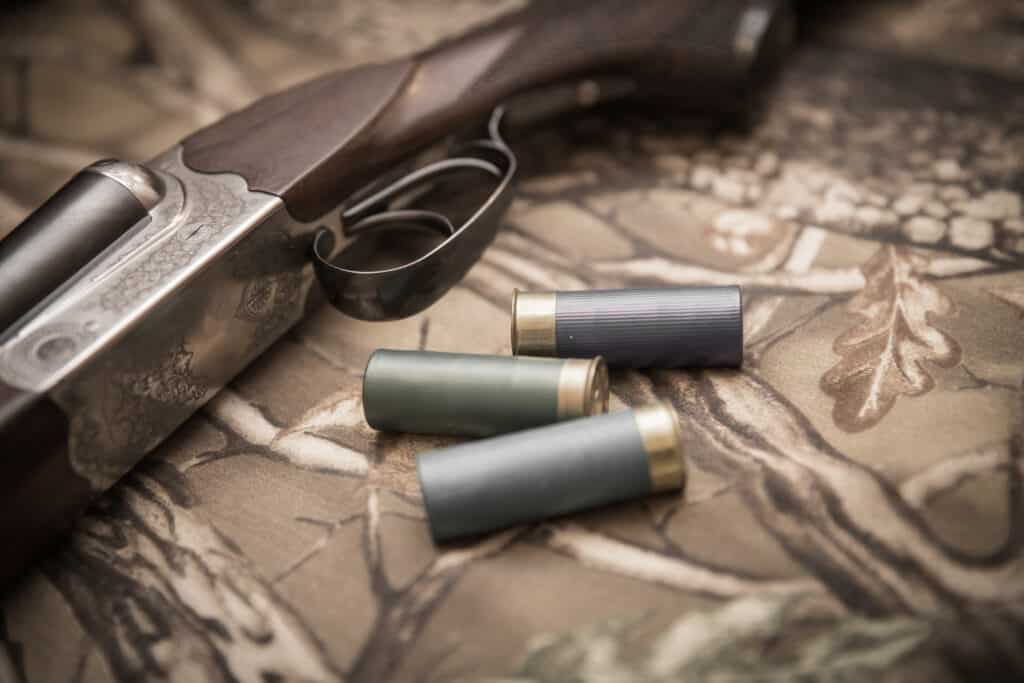
I usually choose a 20-gauge or 12-gauge shotgun when hunting rabbits. The 20-gauge provides a nice balance between power and weight, while the 12-gauge is a bit heavier but also more versatile. A more lightweight option I occasionally use is the .410 shotgun, but it requires more precision due to its smaller shot payload.
Shot size is an important consideration as well. For hunting rabbits with a shotgun, I’ve found that using #5 lead or #4 steel shot works well, as they provide sufficient power for a clean kill while minimizing the risk of too many stray pellets in the meat. If I want to use cheaper ammunition, I can opt for #7.5 lead or #6 steel shot, which still perform satisfactorily.
Interchangeable chokes can significantly impact the performance of a shotgun in the field. When hunting rabbits, I usually opt for an Improved Cylinder (IC) choke, as it provides a little more constriction than Cylinder choke, without reducing my chances of hitting a fast-moving rabbit.
Here’s a summary of my preferred shotgun ammunition for rabbit hunting:
- Caliber: 20-gauge or 12-gauge (sometimes .410 for lighter weight)
- Shot size: #5 lead or #4 steel (alternatively, #7.5 lead or #6 steel for cheaper option)
- Choke: Improved Cylinder (IC)
Rifle Ammunition
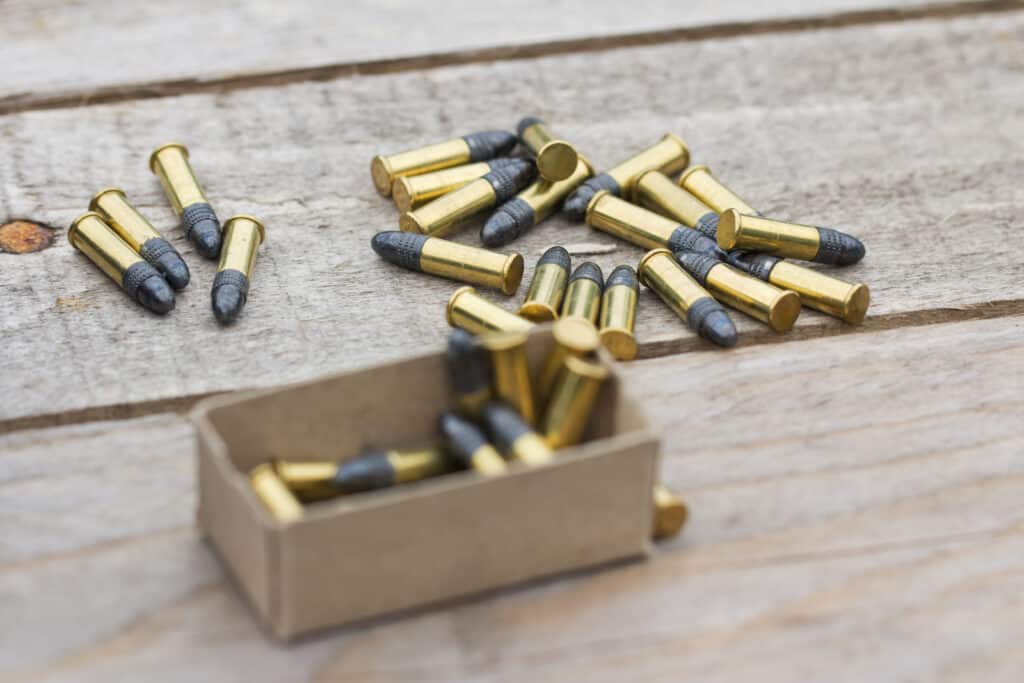
Rifles provide an alternative to shotguns in rabbit hunting, allowing for more precise shots over greater distances. A rifle I often use is the .22 caliber, as it’s lightweight, easily maneuverable, and has relatively low recoil. The wide variety of .22 ammunition available also makes it a versatile choice for rabbit hunting.
However, it’s important to remember that rifles may be subject to different regulations and restrictions than shotguns when it comes to ammunition and hunting practices.
In summary, when hunting rabbits with a rifle, my go-to choice is typically:
- Caliber: .22
- Ammunition: A variety of .22 ammo is available; choose based on personal preference and local regulations
Remember to always follow local laws and regulations when choosing ammunition for hunting and practice responsible, ethical hunting habits. Happy hunting!
Hunting Techniques
Approach and Cover
When I go rabbit hunting, I always consider the importance of a good approach and cover. Thick brush, tall grass, and agricultural fields are some common terrains where rabbits like to reside. To have a successful hunt, I’ll walk slowly and quietly through these areas and keep an eye out for any sign of movement.
When hunting with a shotgun, it is easier to react quickly and hit moving targets if rabbits decide to run. On the other hand, when using a rifle, I prefer to find a vantage point where I can see a large area, as it allows me to carefully take aim and preserve the rabbit’s meat from the damage that shotshells can cause.
Time of Day
Choosing the right time of day when hunting rabbits is also essential. While rabbits can be active at any time, I’ve found that early mornings or late afternoons are ideal for increasing my chances of bagging one. During these hours, rabbits are typically more active as they move out of their hiding spots to look for food.
Using Dogs
Another valuable technique I enjoy employing while hunting rabbits involves using dogs, specifically beagle breeds. Beagles have a keen sense of smell and an energetic nature, making them excellent companions for flushing out rabbits from their hiding spots. When I use my beagle, we have an enjoyable hunting experience, as my dog does most of the work, and I wait for the rabbits to come into my line of sight.
Here’s a brief summary of the techniques mentioned:
- Approach and Cover:
- Thick brush, tall grass, and agricultural fields
- Shotgun for quick shots, rifle for careful aim
- Time of Day:
- Early mornings and late afternoons
- Using Dogs:
- Beagles for their keen sense of smell and energetic nature
Remembering these techniques has helped me improve my rabbit hunting experiences, and I hope they serve you well too.
Hunting Other Small Game
As an avid hunter, I enjoy pursuing various small game species. In this section, I’ll share my experiences with hunting grouse, pheasant, quail, squirrels, and turkeys using both shotguns and rifles.
Grouse, Pheasant, and Quail Hunting
When I’m hunting grouse, pheasant, and quail, I prefer using my shotgun. The versatility of shotguns, with their range of gauges (.410, 20, and 12) and loads, make them well-suited for these quick-flying birds. The spread of shots increases my chances of hitting the target, even when the birds are swiftly changing direction in the air.
Squirrel Hunting
For squirrel hunting, I often switch between my shotgun and .22 rifle, depending on the situation. The shotgun is useful for taking down squirrels quickly, especially when they are moving swiftly among the branches. However, the .22 rifle is perfect for a more precise and quiet approach when I can get a clear headshot.
- Shotguns – great for fast-moving squirrels and a wider spread of shots
- .22 Rifles – ideal for quieter, more precise headshots
Turkey Hunting
Turkey hunting is where I feel that my rifle really shines, particularly when it comes to longer-range shots. Turkeys are larger than most other small game species, so the focused shot that a rifle offers increases my chances of taking down the bird with a single shot.
However, there are times when a shotgun is more appropriate for turkey hunting, especially when the birds are nearby or within dense brush. The wider spread of shots from a shotgun can increase the likelihood of hitting the turkey in these situations.
In summary:
- Rifles – excellent for longer-range shots and focused targeting on larger turkeys
- Shotguns – more suited for closer encounters or hunting within dense brush
Remember, the choice between a shotgun and a rifle ultimately comes down to personal preference and situational factors when hunting small game. Experimenting with both types of firearms in various hunting conditions will help you determine what works best for you and the game you’re pursuing.
Hunting Gear and Equipment
Appropriate Clothing
When I go hunting rabbits, I make sure to wear the right clothing for the weather and environment. It’s important to stay warm and comfortable, especially if it’s cold or wet. I recommend investing in a good quality hunting jacket to keep you warm and protected. Layering your clothes can also be helpful, as it allows for easy adjustments when the temperature changes.
I also prefer wearing camouflaged clothing that blends in with my surroundings, as it helps me remain undetected by the rabbits. Comfortable and sturdy footwear is important too, as walking through rough terrain can be challenging.
Hunting Accessories
When it comes to rabbit hunting, there are a few key accessories I recommend having. First and foremost, make sure to choose an appropriate firearm. Shotguns, such as side-by-sides or double-barrels, can be useful for close-range rabbit hunting, but can be heavier and harder to aim than a rifle. A .22 rifle is an ideal choice for those who want to preserve the meat and avoid making a mess of the target.
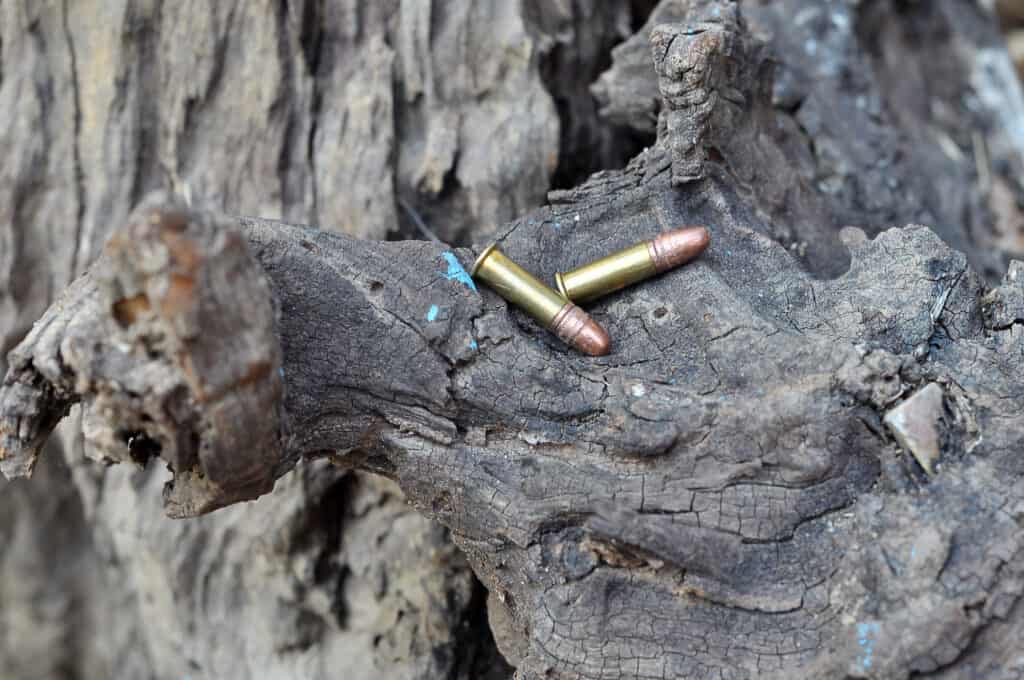
| Firearm | Good For | Considerations |
|---|---|---|
| Shotgun | Close-range hunting, larger spread of shot | Heavier, harder to aim, may damage meat |
| .22 Rifle | Longer range, precise aim, preserving meat | Less effective at close range |
Other essential hunting accessories include:
- Binoculars: These help me spot rabbits from a distance and assess the terrain.
- Bait: Rabbits prefer brussel sprouts, carrots, lettuce, and apples. Having these handy can make my hunt more successful.
- Extra ammunition: It’s always good to have backup ammo in case I need more shots.
Finally, if hunting season extends into colder months, consider investing in some additional cold-weather gear, such as gloves, hats, and thermals. Happy hunting!
Factors to Consider Before Choosing Your Hunting Weapon
When it comes to rabbit hunting, choosing the right weapon can make all the difference in your success and enjoyment of the sport. Before making a decision between a shotgun and a rifle, there are several key factors you should consider.
Preferred Game
The type of game you prefer to hunt will play a major role in your weapon choice. While I enjoy rabbit hunting, I also like to hunt other game like ducks, squirrels, and turkeys.
Shotguns are versatile and can be effective for various types of game. A modified choke can help you adapt your shotgun for different prey sizes and distances.
On the other hand, rifles are generally better suited for larger, more stationary targets or long-range shooting. They may not be ideal for small, fast-moving targets like rabbits.
Personal Preferences
Your personal preferences also come into play when choosing a hunting weapon. I suggest considering factors such as:
- Comfort: Do you feel more comfortable and confident with a shotgun or a rifle in your hands?
- Fit: Does the gun feel balanced and natural to hold and aim?
- Learning curve: Are you willing to invest time in becoming proficient with your chosen weapon?
Take the time to try both types of firearms at a local range or through a friend to help make an informed decision.
Hunting Season
The time of year when rabbit hunting is allowed will also affect your weapon choice. In the U.S., rabbit hunting season typically takes place during the fall and winter months. However, some upland areas may have different regulations.
During the open season, you’ll want a weapon that best suits the conditions and the behavior of rabbits. For example, in the fall, rabbits are more likely to be found in fields with tall grasses. A shotgun may work better in this environment, as it’s easier to aim and offers the ability to hit multiple rabbits with one shot.
On the other hand, during winter months, when there’s snow on the ground, rabbits are better camouflaged and may be more difficult to spot. In this case, a rifle with a scope might be a better choice for precise and accurate shooting.
Remember to keep it brief and avoid exaggerations or false claims. Always consider your preferred game, personal preferences, and hunting season when choosing your equipment for rabbit hunting. Happy hunting!
Final Thoughts
In my experience, both shotguns and rifles have their own advantages and disadvantages when it comes to hunting rabbits. As someone who loves hunting, I would like to share my thoughts on these options.
When hunting rabbits with a shotgun, I find that it’s easier to hit fast-moving targets, thanks to the spread of the pellets. This can be a game-changer, especially when using calibers like the 20-gauge shotgun or a 12-gauge with a smaller shot size. My personal favorites include the H&R Topper Deluxe Classic 20 Gauge and the CZ Bobwhite.
However, there are some drawbacks to using a shotgun. Sometimes, I feel like picking pellets out of the meat can get a little tedious, and the shorter range compared to rifles can limit my opportunities.
On the other hand, when hunting with a rifle, I appreciate the accuracy it offers for pinpoint shooting. I find that it’s perfect for those moments when a rabbit is sitting still at a distance. Calibers like the .22 LR are known to be ideal for rabbit hunting since the bullets are small enough to minimize damage to the meat.
Now, rifles do require a steadier hand, better aim, and a little more patience than shotguns. However, when I get a clean shot, it’s incredibly satisfying.
In Conclusion
To sum it up, both shotguns and rifles have their own merits when it comes to hunting rabbits.
- Shotguns:
- Pros: Easier to hit moving targets, wider range of options
- Cons: Picking out pellets, shorter range
- Rifles:
- Pros: Accurate, less damage to meat, longer range
- Cons: Requires more skill, not as forgiving with moving targets
For me, it ultimately comes down to the specific situation and personal preference. When I’m in the mood for a fast-paced hunt, I’ll grab my shotgun. However, when I want to test my skills and patience with a more precise approach, I’ll reach for my rifle. Happy hunting!

